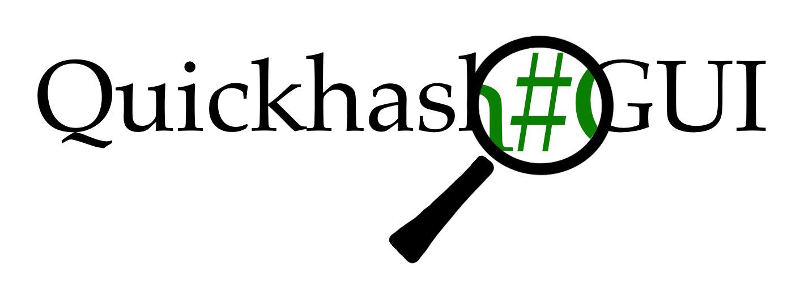Quickhash-GUI v3.3.4 is out
What’s new, Ted?
2023 has not seen a flurry of updated releases as much as some of the earlier years, that is true. Family life and work life is busy, and you’d be surprised just how much time it takes creating and maintaining a software tool that works generally seamlessly on both Windows, Linux and Apple Mac OSX.
But, thanks to a little time off work during October and November, we have seen the release of both v3.3.3. and then v3.3.4 soon after. Both versions contain a lot of important fixes over earlier versions, as well as some new, often requested, features. Most notably, it now saves your last chosen hash algorithm, for example. So if you re-launch QuickHash-GUI after using it with one of the non default options, it will reload next time with whatever you chose, instead of the default SHA-1.
There are lots of other fixes – some of them are important! – interested readers are encouraged to read the CHANGELOG of v3.3.3 and v3.3.4
Apple Mac OSX News
One big bit of news is that I have, at last, managed to make a version that works again on Apple Mac OSX systems. v3.3.4 for Mac has been tested on both Intel (running Monterey) and silicon M1 chipped Apple Mac systems (running OSX v14, Sonoma), and it seems to work fine; on my systems at least, and a few friends. I do not have an M2 chipped Mac so cant say for sure on that but I am hoping it will be OK.
Furthermore, rather than providing just an .app, that some users struggled to execute, I now ship the Apple version as a DMG image. So the user simply needs to double click the DMG to mount it, then navigate to it in Finder, copy the QuickHash-GUI.app to their /Applications folder, and it should (hopefully) run. You may still have to give it explicit permission via the Security settings of the Mac due to it not being downloaded from the Apple store. But aside from that, hopefully it will be golden. Not perfect – nothing ever is. But better than nothing.
Data Validation Pack
Also recently released is a small downloadable data validation set complete with guidance to help regulated work areas who use Quickhash-GUI validate it for their work areas. This is an increasingly common requirement as the need for data validation grows globally, but which is especially common in the UK now.
Training
Update Jan 2023 : An instructor led training course is now available for anyone who is interested in knowing the in’s and out’s of QuickHash-GUI. Full details are here
As always, donations are warmly received! If you value what this project is, and would like to help with the funding of it, visit the donate page with my thanks. Running the website alone costs about £40 a month. I just laid out to renew the domain name again too. I spent over £20 on AWS Translate last week creating user manuals in 14 different languages for our non-English speaking users to benefit from. And much more besides. Donations help me a great deal, but without them, it makes financing this little endeavour harder.




Thank you for a great free open-source app, and for continuing to work on it sustainably for the long term.
I found installing it on macOS for Apple Silicon even easier by using HomeBrew (a community-run package manager):
1. If you don’t already have HomeBrew installed, go to https://brew.sh , copy the single line command from that page, paste it and run it in “Terminal”.
2. Once you do have HomeBrew installed, install QuickHash-GUI by running the following command in “Terminal”:
brew install –cask quickhash
There’s a package manager for Windows too: WinGet. (I’m aware there are others, such as Chocolatey, too.) However it seems that QuickHash-GUI isn’t yet listed in the WinGet repository. I’m not quite technically confident enough to go through the steps at https://github.com/microsoft/winget-pkgs to add QuickHash-GUI to the WinGet repository. So please would someone else do this?
Linux distributions operate by default by using package managers and repositories for their apps/software.
For me on macOS and Windows, using HomeBrew and WinGet has made installing and uninstalling apps/software much quicker and easier. And, as you can write a batch file of all the commands to install a list of all the apps/software you want, it makes reinstalling an OS and all your “typical” apps/software much quicker and easier.
Many thanks for the comment and helpful direction for others to benefit from. Sorry for the late approval of the comment.